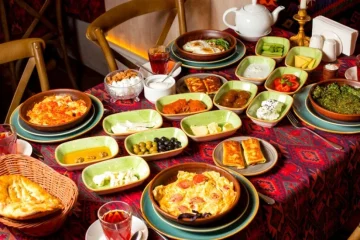Introduction to Single Origin Coffee
Single origin coffee is a term that has gained significant traction in the world of coffee connoisseurs and enthusiasts. Unlike blends that mix beans from various regions, Single origin coffee is sourced from one specific location. This could be a particular country, region, or even a single farm. The allure of single origin coffee lies in its ability to showcase the unique flavors and characteristics of the place where it is grown. This concept of terroir, borrowed from the wine industry, emphasizes the influence of the environment on the taste and quality of the coffee. In this paragraph, we will delve into what single origin coffee is, why it has become popular, and its impact on the coffee industry.
The Journey from Bean to Cup
Understanding the journey of single origin coffee from bean to cup reveals the meticulous process involved in producing this premium product. It begins with the careful cultivation of coffee plants in specific regions known for their ideal growing conditions. These regions, often located in countries like Ethiopia, Colombia, and Guatemala, offer unique climates, altitudes, and soil compositions that impart distinct flavors to the beans. Harvesting is done by hand to ensure only the ripest cherries are picked. Once harvested, the beans undergo processing methods such as washing, drying, and hulling, each step carefully controlled to preserve the bean’s inherent qualities. Finally, roasting brings out the beans’ full flavor potential, with roasters often tailoring their techniques to highlight the unique characteristics of the single origin beans. This paragraph highlights the detailed process that ensures the high quality and distinctive flavors of single origin coffee.
Flavor Profiles and Characteristics
One of the most appealing aspects of single origin coffee is its diverse and distinct flavor profiles. Unlike blended coffees, which aim for a consistent taste, single origin coffees celebrate the unique flavors that arise from their specific growing conditions. For instance, Ethiopian coffees are renowned for their bright acidity and floral notes, often with hints of blueberry or jasmine. On the other hand, Colombian single origin coffees might offer a balanced profile with nutty undertones and a caramel sweetness. The terroir plays a crucial role here, with factors such as altitude, soil composition, and climate directly influencing the taste. This paragraph explores how these factors contribute to the unique and often complex flavor profiles that make single origin coffee so sought after by enthusiasts.
The Role of Sustainability and Ethical Sourcing
Single origin coffee is often associated with sustainable and ethical sourcing practices. By focusing on beans from specific locations, coffee producers can forge closer relationships with the farmers who grow the beans. This direct trade model ensures that farmers receive fair compensation for their high-quality produce, promoting better living conditions and encouraging sustainable farming practices. Additionally, many single origin coffees are grown under organic and environmentally friendly conditions, reducing the ecological footprint of coffee production. Certifications such as Fair Trade and Rainforest Alliance are commonly found in single origin offerings, providing consumers with the assurance that their coffee choices support ethical and sustainable practices. This paragraph discusses the positive impact of single origin coffee on sustainability and the well-being of coffee farming communities.
The Growing Popularity and Market Trends
The popularity of single origin coffee has surged in recent years, driven by a growing consumer desire for quality and transparency. Coffee aficionados are increasingly seeking out unique and high-quality coffee experiences, leading to a rise in specialty coffee shops and roasters that specialize in single origin offerings. The trend is also reflected in the retail market, with supermarkets and online stores offering a wider range of single origin coffees. This shift towards premium coffee experiences is not just limited to enthusiasts; even casual coffee drinkers are becoming more aware of and interested in the origins and quality of their coffee. The growing demand for single origin coffee has also led to innovations in brewing techniques and equipment, further enhancing the coffee drinking experience. This paragraph examines the market trends and the factors contributing to the rising popularity of single origin coffee.
Conclusion: Embracing the Unique Experience of Single Origin Coffee
Single origin coffee offers a unique and enriching experience for coffee lovers, combining exceptional flavor profiles with ethical and sustainable practices. Its journey from bean to cup highlights the dedication and care involved in producing high-quality coffee that truly reflects its place of origin. The growing popularity of single origin coffee signifies a shift towards a more discerning and conscious coffee culture, where consumers value the story and quality behind their cup. Whether you are a seasoned coffee aficionado or a curious newcomer, exploring the world of single origin coffee can provide a deeper appreciation for the complexities and nuances of this beloved beverage. This final paragraph encourages readers to embrace and explore the rich and varied world of single origin coffee, celebrating its uniqueness and the dedication of those who produce it.



